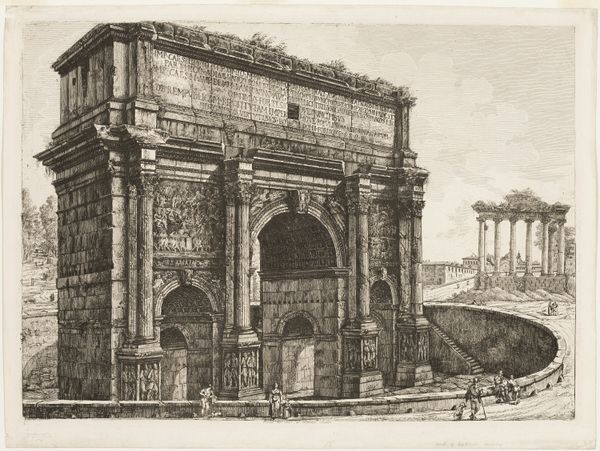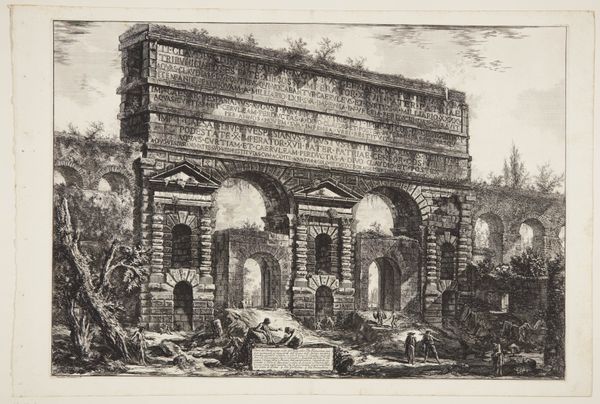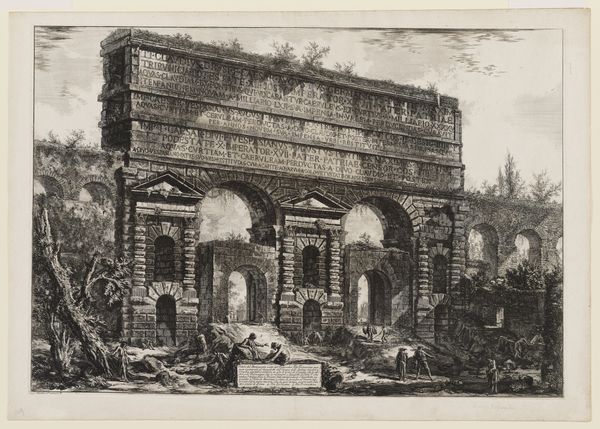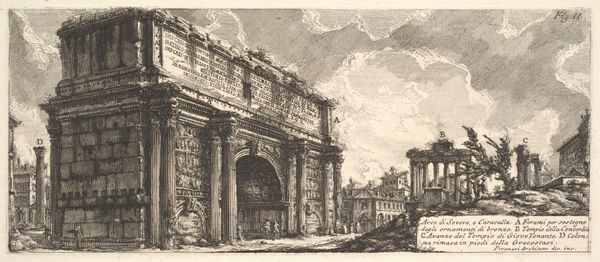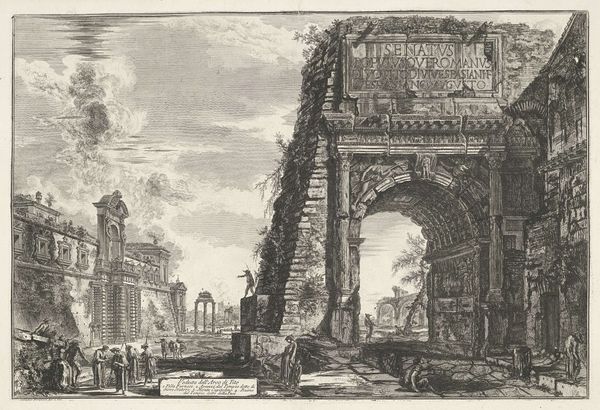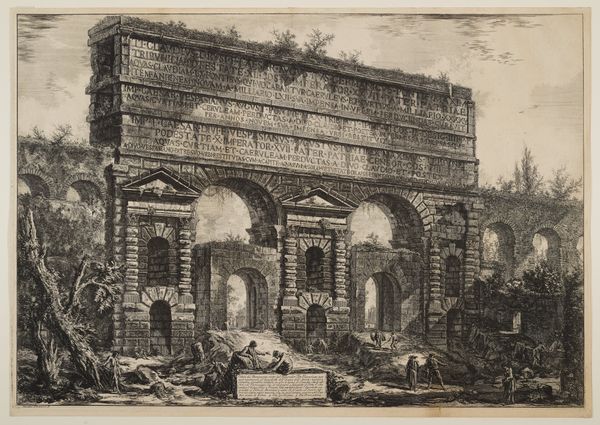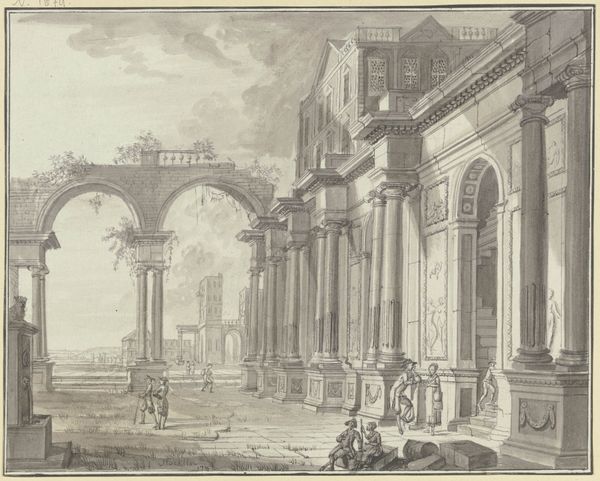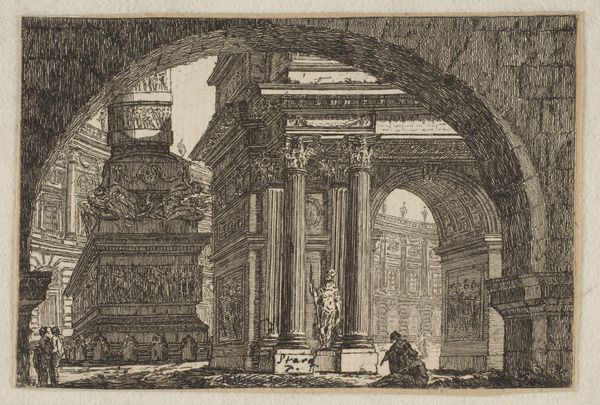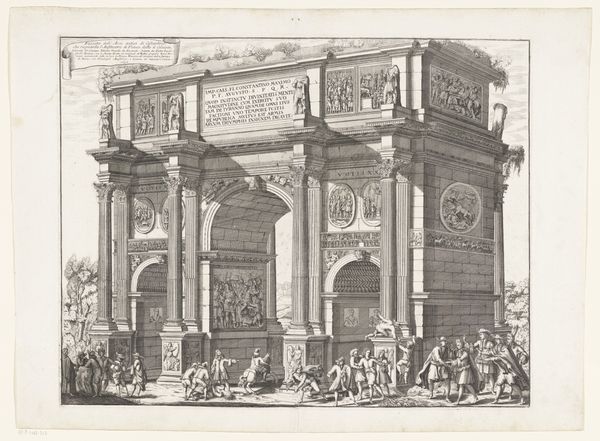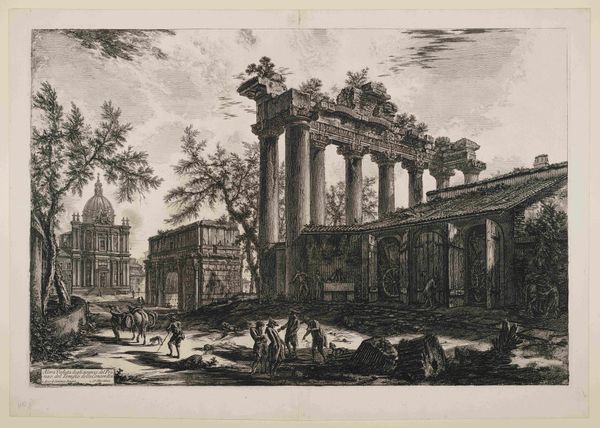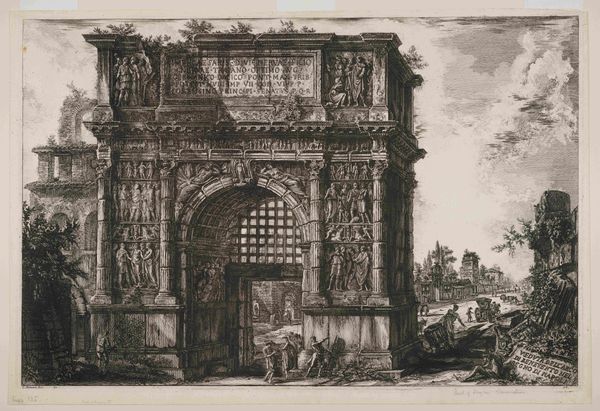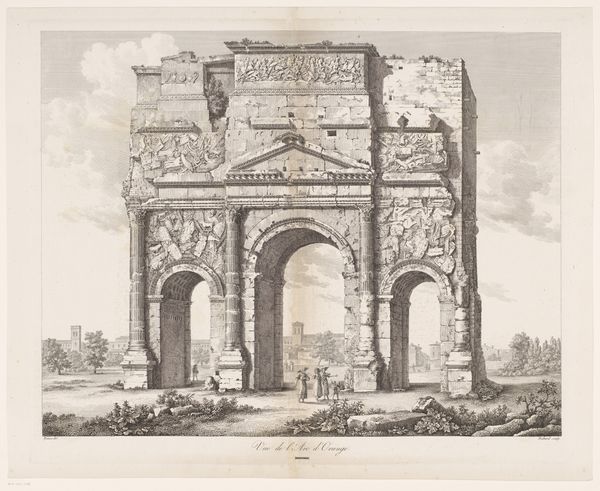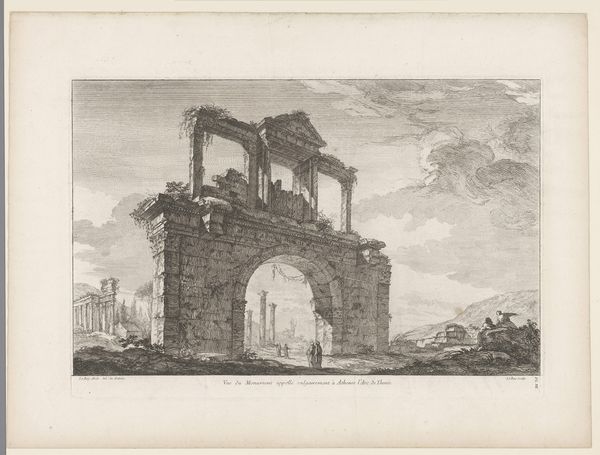
print, etching, architecture
# print
#
etching
#
landscape
#
etching
#
romanesque
#
geometric
#
classicism
#
cityscape
#
history-painting
#
architecture
Dimensions: 18 3/4 x 18 1/4 in. (47.63 x 46.36 cm) (plate)21 x 30 1/4 in. (53.34 x 76.84 cm) (sheet)
Copyright: Public Domain
Curator: Here we have Giovanni Battista Piranesi's 1772 etching, "View of the Septimus Severus," currently held in the Minneapolis Institute of Art. Editor: Whoa, there’s such a weight to this image! It almost feels… oppressive? The dark lines of the etching create this massive, looming presence. Curator: Indeed. Piranesi was a master of architectural renderings, and his strategic deployment of shadow accentuates the monumentality and permanence of the arch. Notice the precision of line, especially in the rendering of the carved details and the textual inscription. The interplay between light and shadow defines the geometric shapes composing the triumphal arch, constructed originally in AD 203. Editor: You’re right, it’s all about the structure. But look how small he’s made the figures at the base. They seem insignificant against this enormous relic, lost in time almost, while that tree looks like it's bursting with secrets. It's a bit melancholic, isn't it? The contrast creates such a strong emotion in me. Like a celebration, yet sad, nostalgic. Curator: The artist's choices contribute to a layered visual text, revealing not only structural but historical significance. By using such contrasts in scale and the deliberate roughness of his lines, Piranesi's aesthetic encourages a romantic view of the classical world, with an eye on a ruin—but, one whose aesthetic power remains despite being worn by the elements and the passage of time. Editor: Ruin it is, I guess! He’s captured the soul of an era and the inevitability of entropy, beautifully. It really lingers, this image does, leaving a sense of profound impermanence even with stone so grand. The way the lines create texture makes you think you could touch the etching, as if Piranesi meant to make it immersive. Curator: Absolutely. It provokes contemplation on time, decay, and the enduring power of architectural forms. It’s a perfect blend of observation, emotion, and artistic virtuosity, isn’t it? Editor: A perfect ending, right on the nose. Now I feel like I might want to start a landscaping business, planting flowers and letting old houses turn into poetic ruins.
Comments
minneapolisinstituteofart almost 2 years ago
⋮
The Arch of Septimus Severus, dedicated in the year 203 CE, was a tribute to Rome’s military exploits. If it appears rather squat here, it’s because by Piranesi’s time repeated floods had deposited about 15 feet of dirt and debris on the ground around it. The arch suffered other indignities as well. Emperor Septimus Severus had it built to commemorate his own military victories and those of his two sons, Caracalla and Geta. After his death the two sons ruled jointly, but within a year Caracalla had Geta assassinated and had his brother’s likeness and name chiseled off the monument.
Join the conversation
Join millions of artists and users on Artera today and experience the ultimate creative platform.
